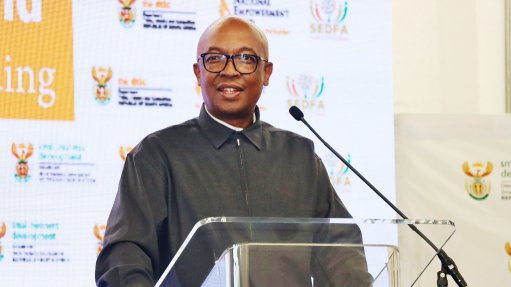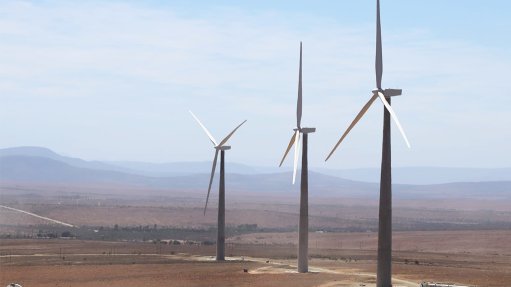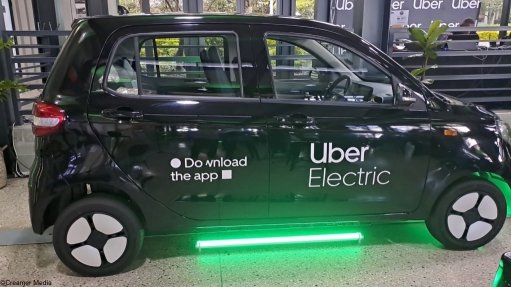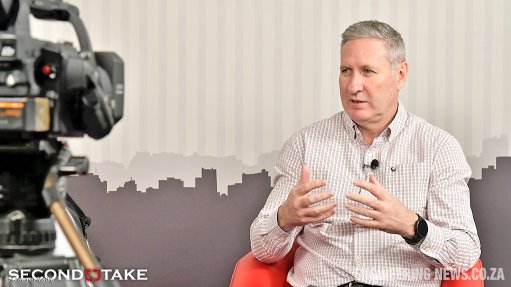Opinion: The grid’s the thing
In this opinion article, Mike Levington argues that using renewable energy to meet South Africa’s economic and developmental goals will require a significant shift in thinking about the grid.
Government, business and labour have consistently been self-serving in their approach to the management of the electricity supply industry which has prioritised their vested interests over that of the general public. For the last 20 years, the increasingly polarised arguments about South Africa’s electricity mix have obsessed on generation technologies – with the assumption that transmission and distribution was such a small part of the overall capital expenditure, it was not important.
The electricity crisis has changed all of that.
Electricity, no matter how it is generated, is of no use unless it can be delivered cost effectively to a commercial enterprise who can convert it into economic value or to a residential customer to access a better life.
We’re facing a situation where Eskom’s coal fleet is organically decommissioning itself, the energy policy making framework has become fractured along ideological lines and, whilst legislation has been in place for over two years, SA Inc has woken up to the reality that self-generation is not the free lunch that Eskom has provided them for the last 90 years. Most importantly, all of South Africa’s key stakeholders have finally woken up to the global new reality that any realistic net zero ambitions over any time horizon will rely as much on the grid as it will on the mass adoption of solar photovoltaic (PV) and wind. And it is here that the history of our electricity supply industry (ESI) determines the extent of the challenge facing the country’s energy transition from both an economic and just transition perspective.
The architecture of South Africa’s electricity sector as we know it today was set by close interactions between Eskom and South Africa’s mining sector in the 1950s. From the 1950s to the 1970s, there was a dramatic scaling up of the size of power stations to exploit the country’s huge coal resources located in Mpumalanga and deliver power to the gold and platinum fields located to the north and west of Johannesburg. The scale of these capital projects dwarfed the economics of any transmission infrastructure required and thus the pattern was set that the needs of industrial scale electricity customers would always be prioritised over those of residential or even small commercial consumers. To some extent, Apartheid was just the formalisation of that relationship between the government of the time and the mining titans.
Today, South Africa yearns for a Just Energy Transition (JET) that will see a large-scale acceleration in the deployment of renewable energy, supported by natural gas and batteries, to solve our fossil fuel addiction and cure all of our social ills. In studies performed by the Council for Scientific and Industrial Research (CSIR) and Meridian Economics in 2021, even a moderate growth scenario for South Africa forecast a 2050 electricity mix with over 150 GW of renewables deployed. If we were to believe the electric vehicle and green hydrogen ambitions in the JET Investment Plan, we could easily add an additional 100 GW on top of that. Whilst fossil fuel purists might want to scoff at such ambition, it should be recognised that China alone will install more than 300 GW of wind and solar in 2023.
However, if we want to be genuine in meeting both our economic and developmental goals using renewable energy then South Africa needs to wake up to a few realities concerning its grid:
- The spatial deployment of a renewables-rich 2050 electricity mix should mean that a National Distribution (rather than Transmission) Plan is critical to address energy poverty and access. The role of transmission is to move large blocks of power from one part of the country to another: a future energy system where distributed generation will be located closer to where it will be consumed will mean we should be as deliberate about the planning and implementation of the future electricity distribution system as we now are about transmission.
- South Africa’s transmission voltages are an anachronism of its past, set at 275 kV because this was the lowest voltage that Eskom power stations connected to each other. Elsewhere in the world, 80 kV and above are generally regarded as transmission voltages. This causes all kinds of misalignment around grid planning and grid connection. The vast majority of independent power producers connect at 132 kV (which is oddly referred to by Eskom as “sub-transmission”).
- The digitalisation of economies the world over and the rise of the “prosumer” class will require such networks to create a “smart” relationship between customer and electricity distributor. This will lead to greater integration between traditional electricity distribution and information and communication technology sectors.
Lastly, the historical thesis on which South Africa’s electricity system was designed, whereby the lion’s share of the benefits flow to the political and business elites, needs to be reversed.
To do this, the impact on the delivered cost of electricity due to the prioritisation of the mineral-energy industrial complex, as well as so-called “baseload” technologies, needs to be properly understood and should play a critical role in any decisions on South Africa’s future electricity mix.
Levington is the founder of nexuses (Pty) Ltd., a strategic advisory practice that focuses on the adoption of the green economy in South Africa’s just energy transition. He is a member of the Green Hydrogen Panel and the Project Committee of the South African Renewable Energy Masterplan.
Article Enquiry
Email Article
Save Article
Feedback
To advertise email advertising@creamermedia.co.za or click here
Comments
Press Office
Announcements
What's On
Subscribe to improve your user experience...
Option 1 (equivalent of R125 a month):
Receive a weekly copy of Creamer Media's Engineering News & Mining Weekly magazine
(print copy for those in South Africa and e-magazine for those outside of South Africa)
Receive daily email newsletters
Access to full search results
Access archive of magazine back copies
Access to Projects in Progress
Access to ONE Research Report of your choice in PDF format
Option 2 (equivalent of R375 a month):
All benefits from Option 1
PLUS
Access to Creamer Media's Research Channel Africa for ALL Research Reports, in PDF format, on various industrial and mining sectors
including Electricity; Water; Energy Transition; Hydrogen; Roads, Rail and Ports; Coal; Gold; Platinum; Battery Metals; etc.
Already a subscriber?
Forgotten your password?
Receive weekly copy of Creamer Media's Engineering News & Mining Weekly magazine (print copy for those in South Africa and e-magazine for those outside of South Africa)
➕
Recieve daily email newsletters
➕
Access to full search results
➕
Access archive of magazine back copies
➕
Access to Projects in Progress
➕
Access to ONE Research Report of your choice in PDF format
RESEARCH CHANNEL AFRICA
R4500 (equivalent of R375 a month)
SUBSCRIBEAll benefits from Option 1
➕
Access to Creamer Media's Research Channel Africa for ALL Research Reports on various industrial and mining sectors, in PDF format, including on:
Electricity
➕
Water
➕
Energy Transition
➕
Hydrogen
➕
Roads, Rail and Ports
➕
Coal
➕
Gold
➕
Platinum
➕
Battery Metals
➕
etc.
Receive all benefits from Option 1 or Option 2 delivered to numerous people at your company
➕
Multiple User names and Passwords for simultaneous log-ins
➕
Intranet integration access to all in your organisation




















